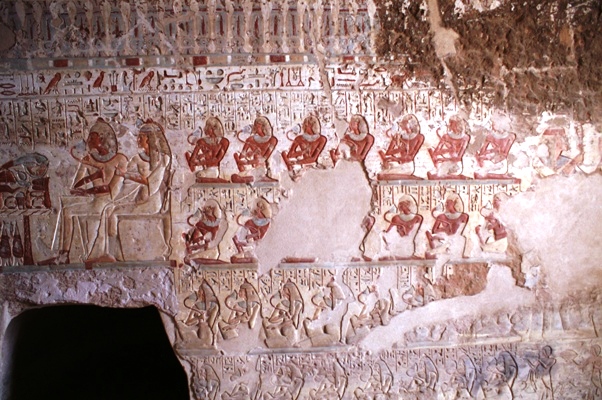
2025 Sally L.D. Katary Memorial Lecture
The 2025 Sally L.D. Katary Memorial Lecture will be held 31 May. For details, Click Here
JSSEA 50 now online
Members can now log in and download a colour PDF copy of JSSEA 50 (2023-2024)
There is also an index of volumes I to XLVIII now available and freely downloadable from here.

Hatnub, a region of the Egyptian Eastern Desert 16.4km south-east of Amarna, was the most prestigious ancient source of the stone known as ‘Egyptian alabaster’, travertine, or calcite. Epigraphy is found at Hatnub in three quarries: P (which contains the large majority of surviving material), as well as R and T. This paper focuses on the epigraphy from quarry P, some of which has been long published, and some of which has been recently discovered by the Franco-British Hatnub Project (Mission Hatnoub). In quarry P, epigraphy is concentrated on the sides of the rock-cut ramp descending into the open-cast quarry, and at various points around the rock walls of the interior of the quarry. Datable examples range from the Fourth to Eighteenth Dynasties, with particular concentrations in the later Old Kingdom, and the very late First Intermediate Period / very early Middle Kingdom. Epigraphy is created using a wide range of methods, including sunk relief, raised relief, and incised texts, as well as a large number of examples executed solely in red pigment. This paper gives an overview of the titles of expedition leaders mentioned in the texts, and provides a preliminary analysis of text-types found in them. Social and religious aspects of the epigraphy are also considered.
About the Speaker:
Dr. Roland Enmarch studied Egyptology with Akkadian at Oxford University, and stayed on there for his doctorate in Middle Egyptian literature. Since 2004 he has been at the University of Liverpool, where he is currently Senior Lecturer in Egyptology. He was Editor-in-Chief of the Journal of Egyptian Archaeology from 2009-2013. His publications include A World Upturned (2008) and Ancient Egyptian Literature: Theory and Practice (2013). He has worked on Egyptian laments, and more recently has specialised in the study of Egyptian expeditionary inscriptions, principally from the site of Hatnub, where he is co-director of the ongoing archaeological mission.
Powered by iCagenda